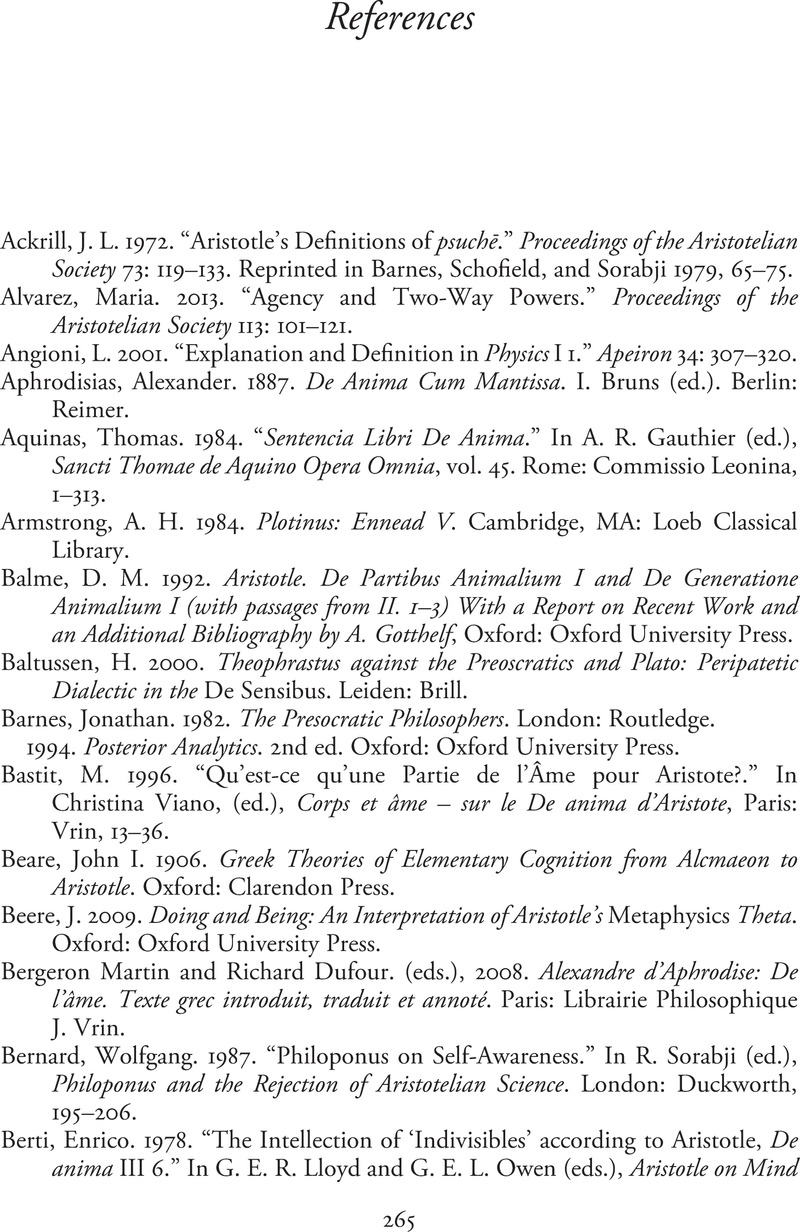Book contents
- Aristotle’s On the Soul
- Cambridge Critical Guides
- Aristotle’s On the Soul
- Copyright page
- Contents
- Contributors
- Acknowledgments
- Abbreviations
- Introduction
- Chapter 1 Hylomorphic Explanation and the Scientific Status of the De Anima
- Chapter 2 Aristotle on Earlier Definitions of Soul and Their Explanatory Power: DA I.2–5
- Chapter 3 Why Nous Cannot Be a Magnitude: De Anima I.3
- Chapter 4 Souls among Forms: Harmonies and Aristotle’s Hylomorphism
- Chapter 5 Aristotle on the Soul’s Unity
- Chapter 6 Aristotle on Seed
- Chapter 7 The Gate to Reality
- Chapter 8 Aristotle on the Objects of Perception
- Chapter 9 Perceptual Attention and Reflective Awareness in the Aristotelian Tradition
- Chapter 10 Phantasia and Error
- Chapter 11 Intelligibility, Insight, and Intelligence
- Chapter 12 The Separability of Nous
- Chapter 13 Thought and Imagination
- References
- Index
- Cambridge Critical Guides
- References
References
Published online by Cambridge University Press: 06 January 2022
- Aristotle’s On the Soul
- Cambridge Critical Guides
- Aristotle’s On the Soul
- Copyright page
- Contents
- Contributors
- Acknowledgments
- Abbreviations
- Introduction
- Chapter 1 Hylomorphic Explanation and the Scientific Status of the De Anima
- Chapter 2 Aristotle on Earlier Definitions of Soul and Their Explanatory Power: DA I.2–5
- Chapter 3 Why Nous Cannot Be a Magnitude: De Anima I.3
- Chapter 4 Souls among Forms: Harmonies and Aristotle’s Hylomorphism
- Chapter 5 Aristotle on the Soul’s Unity
- Chapter 6 Aristotle on Seed
- Chapter 7 The Gate to Reality
- Chapter 8 Aristotle on the Objects of Perception
- Chapter 9 Perceptual Attention and Reflective Awareness in the Aristotelian Tradition
- Chapter 10 Phantasia and Error
- Chapter 11 Intelligibility, Insight, and Intelligence
- Chapter 12 The Separability of Nous
- Chapter 13 Thought and Imagination
- References
- Index
- Cambridge Critical Guides
- References
Summary

- Type
- Chapter
- Information
- Aristotle's On the SoulA Critical Guide, pp. 265 - 278Publisher: Cambridge University PressPrint publication year: 2022



